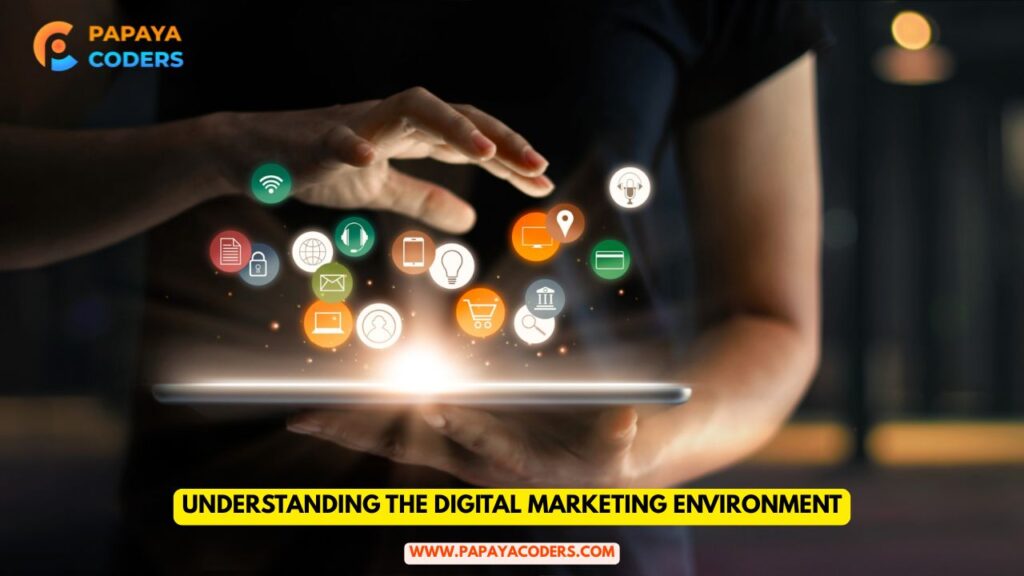The digital environment has had a transformative effect on how we connect with customers, and one area that it has changed is placement. In the field of marketing, placement literally means the how and where a product or service is placed with the target market. Previously, placement could only occur in a retail location, through a sign, or in a commercial placement on television.
Today, however, information placed in marketing is expanding to encompass websites, social media channels, search engines, and mobile apps. Let’s now turn to how placement is evolving with current expectations of the digital marketing space and what this means for the business’s value.
Understanding The Digital Marketing Environment

1. Transition from Physical Placement to Digital Placement
Placement used to be focused almost exclusively on choosing a location or distribution method to get a product to a target market. With online platforms, businesses have the ability to sell directly to customers. Consumers can access a business’s online store, its website, or a third-party site.
Digital channels give companies the ability to offer consumers very high placement flexibility for products and services. This shift now provides companies of all sizes, even small businesses, the ability to target a global audience.
2. Effective Targeting and Customer Reach
Digital marketing allows organisations to market their products with a high degree of precision to the right audience. For example, Google Ads, social media-focused campaigns, and programmatic marketing provide terrific methods of targeting users based on demographics, interests, and online behaviour, to make placement more meaningful.
If you are a B2B company, for example, you could run LinkedIn ads that are specifically targeted to the right industry and the right decision makers directly.
3. Placement via Search Engines
Search engines are one of the best channels for placement. When users search for solutions, being on the first page of Google significantly increases your profile. This is the reason SEO is so important – because it helps organisations optimise their website and marketing content for some of the biggest search engines.
Good SEO helps not only drive more traffic, but also increases chances for conversions and builds the foundation for sustainable, additional sales over the long haul.

4. Social Media Utilisation as a Placement Tool
Social media tools have changed from a communication tool to an effective placement tool. Whether shopping on Instagram, or a B2B campaign on LinkedIn, business can target their products or services directly to the consumer on these channels. Further, because social media is an interactive platform, businesses can engage with consumers, get feedback and develop their placement in real-time.
5. Data-Driven Placement Decisions
Unlike traditional marketing, digital platforms help provide tracking and analytics to get information about the customer experience. The business can see which channels created the most engagement, sales, or leads. With a data-driven approach of placement decisions, the business can strategically invest in the digital platforms that get the most successful results.
For example, if the analytics show ads on YouTube created more engagement than banner ads, the business can shift the placement to ads on YouTube.
6. International vs. Domestic Placement
The digital landscape allows organisations to balance global views while still being relevant to local audiences. Geo-targeting provides the ability to adjust placements for local audiences, and still include the global audience. For example, a business may have ad placements that are very localised to customers in India, and completely different placements for customers in the U.S.
Read also:-
- Social Media Algorithms in 2025: How to be Part of the Natural Visibility Mix
- Tech Forum Submission Sites: Boost Your Tech Presence
Conclusion:-
Digital marketing has made placements a far more dynamic, targeted and data-driven process. Placements are not simply placements. It’s not just about being present but about being present in the appropriate place, at the appropriate time, in front of the appropriate audience.
Organisations that either recognise this or organisations that cannot transition from traditional placements to the new digital place-based space will build strong ties, ease customer experiences, and create a more sustainable long-term growth model.







